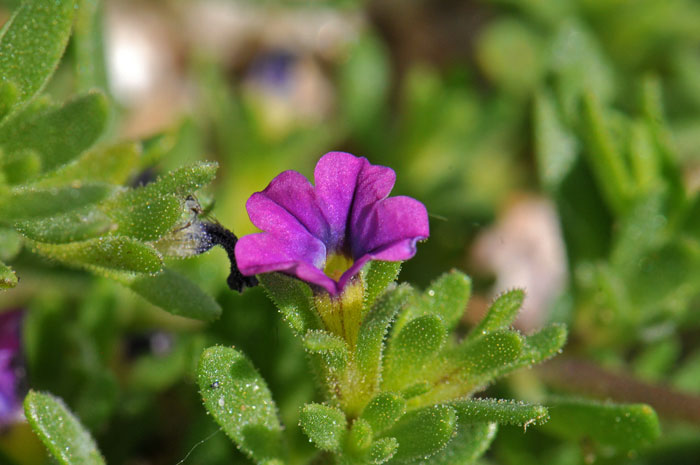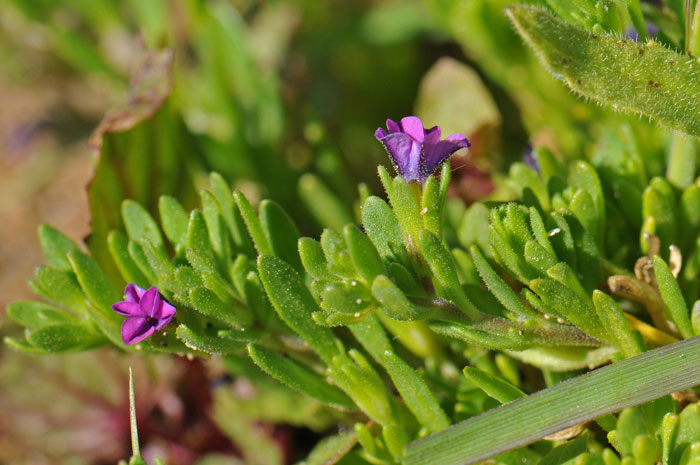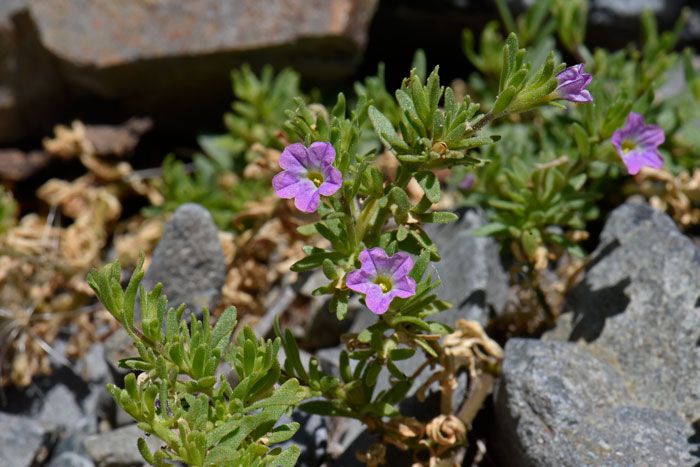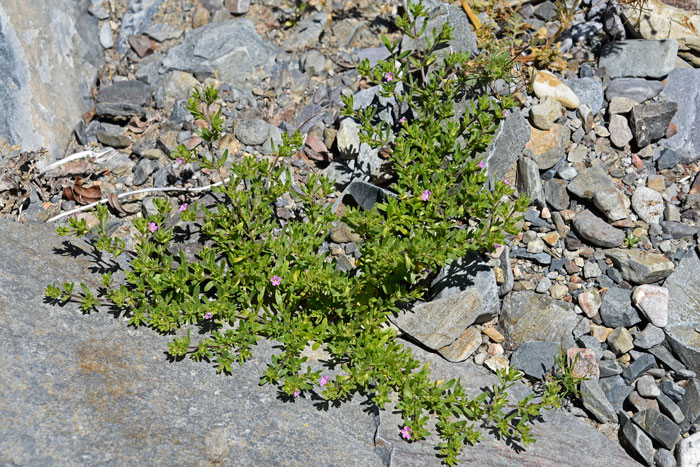Calibrachoa parviflora, Seaside Petunia




Scientific Name: Calibrachoa parviflora
Common Name: Seaside Petunia
Also Called: Seaside-petunia, Small Flower Petunia
Family: Solanaceae, Nightshade or Potato Family
Synonyms: (Nierembergia viscidula, Petunia parviflora)
Status: Introduced
Duration: Annual
Size: Up to 15 inches, usually much less in Arizona.
Growth Form: Forb/herb; plants are glandular-puberulous; stems prostrate to decumbent; stems rooting at the nodes; forms mats, plants leafy.
Leaves: Green; leaves narrow, oblanceolate, somewhat fleshy, about ⅓ of an inch long; sub-sessile.
Flower Color: Purple with whitish; flowers solitary; funnelform corolla, corolla with whitish tube.
Flowering Season: April to September; April to August in California.
Elevation: 400 to 5,000 feet.
Habitat Preferences: Moist soil in beds of streams, and muddy flats; open washes and dry streambanks in California.
Recorded Range: Calibrachoa parviflora is found mostly in the southern and many coastal states in the United States; and in the interior states of Colorado, Kansas and Nevada. It is also native to most of Baja California and throughout Mexico. In Arizona it is found in the western ⅔ of the state with few records in Gila, La Paz and Pinal counties.
North America & US County Distribution Map for Calibrachoa parviflora.
U.S. Weed Information: No information available.
Invasive/Noxious Weed Information: No information available. In North America Calibrachoa parviflora, Seaside Petunia is listed as a Noxious Weed by the federal government and/or a State. Plants included here are invasive or noxious.
Wetland Indicator: In North America Calibrachoa parviflora, Seaside Petunia has the following wetland designations:
Arid West, FACW; Atlantic and Gulf Coastal Plain, FAC; Eastern Mountains and Piedmont, FACW; Great Plains, FACW; Western Mountains, Valleys, and Coast, FACW.
FACW = Facultative Wetland, usually occur in wetlands, but may occur in non-wetlands
FAC = Facultative, occur in wetlands and non-wetlands.
Threatened/Endangered Information: No information available.
In the southwestern United States there is 1, species of Calibrachoa. All data is approximate and subject to taxonomic changes.
Comments: Calibrachoa parviflora, Seaside Petunia is related to the commercially grow Petunia and was previously included in the genus Petunia.

